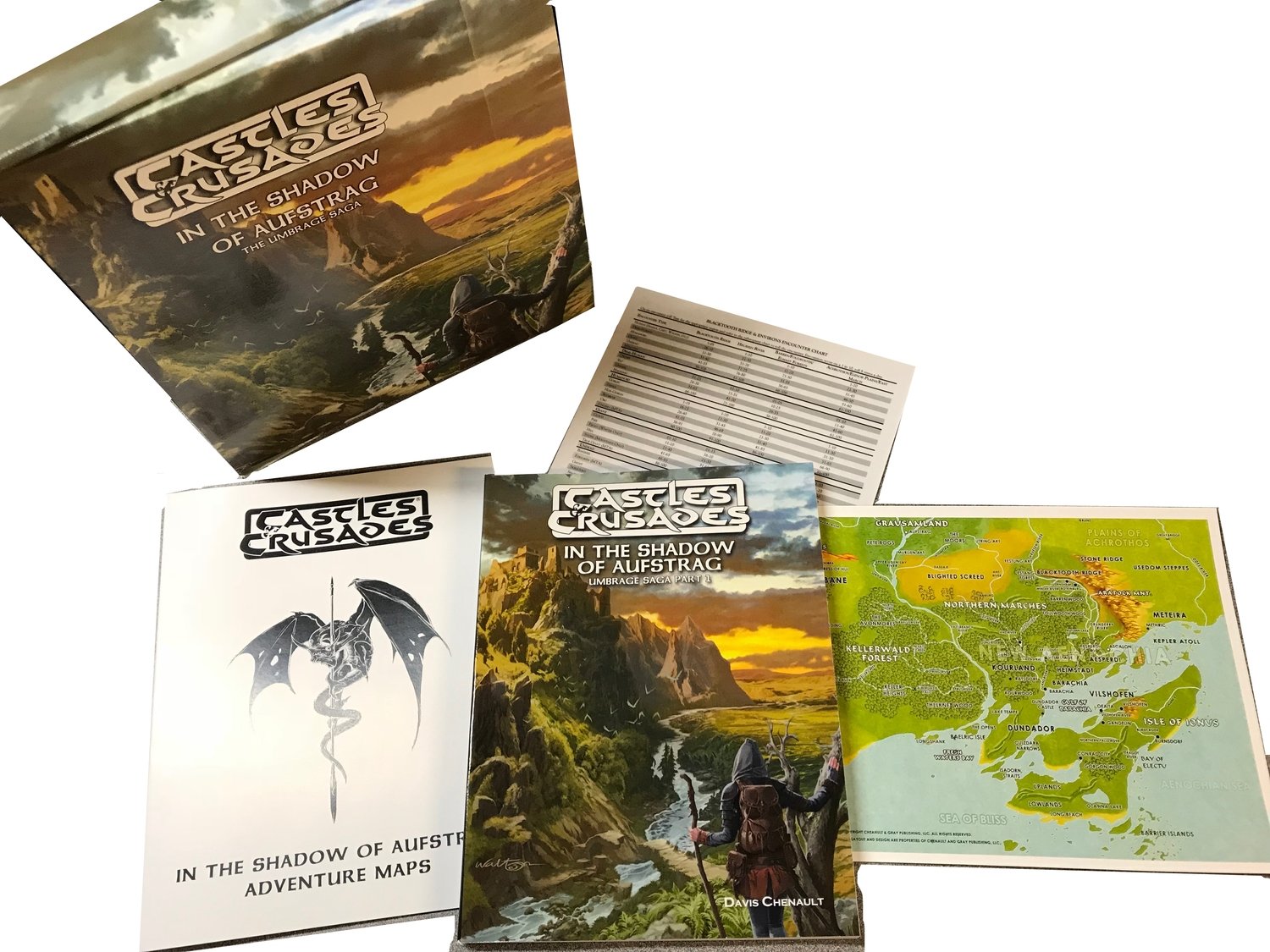One of the most underrated experiences in the OSR right now is all the work Frog God Games put into Lost Lands, Swords & Wizardry, and the old-school adventures they put out regularly. This is a fantastic collection of work, easily exceeding the original Greyhawk module series releases. And every one of these is a classic old-school adventure, anchored by the fantastic king of the mega-dungeons Rappan Athuk.
The world has some Gygax content with the Necropolis adventure, so the world has a pedigree from the master himself. If you play Castles & Crusades in this world (like I plan to), you have even more Gygax-ian charm since he was involved in that game as well, to a certain degree.
And one after the other, the Frog God Games adventures fill in the blanks and eliminate the need to replay the A-series, S-series, or others (I love them, but they have been overdone and need to be put in the Hall of Fame). There are years of old-school adventures here with options of Egyptian-style adventures, Norse, pirate, and many other themes. I dare say the "theme park" elements were done more complete than their Pathfinder counterparts, with complete campaign support for each. And again, Castles & Crusades has Norse and Egyptian sourcebooks, so you can take the flavor and game of these lands to the next level with lore and system support, should you play C&C.
It is a fantastic world, and if you are into the OSR with any game and not taking a look, you are missing out. And since S&W is 99% B/X compatible, any OSR game you prefer will let you jump right in. Even the current OSR king of the hill, Old School Essentials, can drop right in and play here with no changes at all. If I were to play straight OSR, I would do Swords & Wizardry as my first choice, just because of the lessened reliance on modifiers, the magic resistance, and the AD&D-lite feel of the game. Otherwise, I play Castles & Crusades because I can run dozens of party members in various groups with little record keeping and hassle, and the system runs super smooth.
And we have a resident mega dungeon here, too, with the fantastic Rappan Athuk. This is all the mega-dungeon you need for one world, a massive tome, and incredibly expandable with thousands of adventures and stories locked within this book. And there are a few expansion books to this massive tome, with wilderness adventures and even deeper levels.
What Do I Lose?
Well, the classic Greyhawk dungeons. I could always toss them in here if I really wanted since the original modules were never really tightly tied to the Greyhawk setting, with Temple of Elemental Evil likely being the one with the most substantial ties. Still, those can be tweaked and changed to fit a little better. If I put those adventures in the world, I would change them extensively. I might as well; they have become a bit cliché as it is and need reimagining. Some have been horribly over-revisited, such as the Tomb of Horrors. Otherwise, put these dungeons in the Hall of Fame and give me cool new ones.
I was never a part of the Living Greyhawk crowd, so I am not profoundly tied to most of the world. We based our games on Greyhawk City and the Almor region. I can't say I would miss any part of this world since we came to it so late in 1985, and it never really took off with us.
We lose the Greyhawk Wizards Council, which we never really saw a need for, and they tended to be troublemaking Elminsters in our world anyways, no significant loss. They saw the need to brand a few of the spells as their own out of ego too, which was like, bleh. Characters-wise, I can't think of many beyond a few NPCs that we loved that I would want in the new world. They are not official ones, so they could jump quickly.
Greyhawk City was almost entirely populated by high-level adventurers in our world, and it was sort of uninteresting aside from a few hangouts.
What Do I Gain?
An entire unexplored world without as much baggage and botched reboots. I am getting dozens of fresh OSR adventures, many of them hundreds of pages long, and an old-school world that feels Greyhawk authentic.
I hate feeling like I am dumping on Greyhawk since it was never really given a chance. When Gygax was forced out of the company, the world was abandoned. It never really recovered without a champion and driving force of creativity. All that is left are the original classic modules, and even those are becoming like songs that have been remade by different artists too many times.
Because TSR and Wizards never gave Greyhawk world love, the modules were used for reboots repeatedly, and the company never really took care of the land where these came from. And as a result, nothing grows there anymore. Sustainable farming means you will always have food. Sustainable product management means taking care of your game worlds, so they will always produce fun for future generations. You can't milk nostalgia forever.
So I find a game world that is taken care of and has many adventures and support for OSR fun on the level of a Goodman Games, and I say, here is a place and a company that cares.
This is the easiest choice I had to make with finding replacement worlds since the level of OSR support and flavor of the adventures as old-school dungeon crawls fit perfectly. And I have played none of these, so this is like finding a classic game collection you have never experienced.
Lost Lands is my Greyhawk. Frog God Games is my adventure source.
Castles & Crusades and/or Swords & Wizardry are my games.
And I am excited about this change.





























